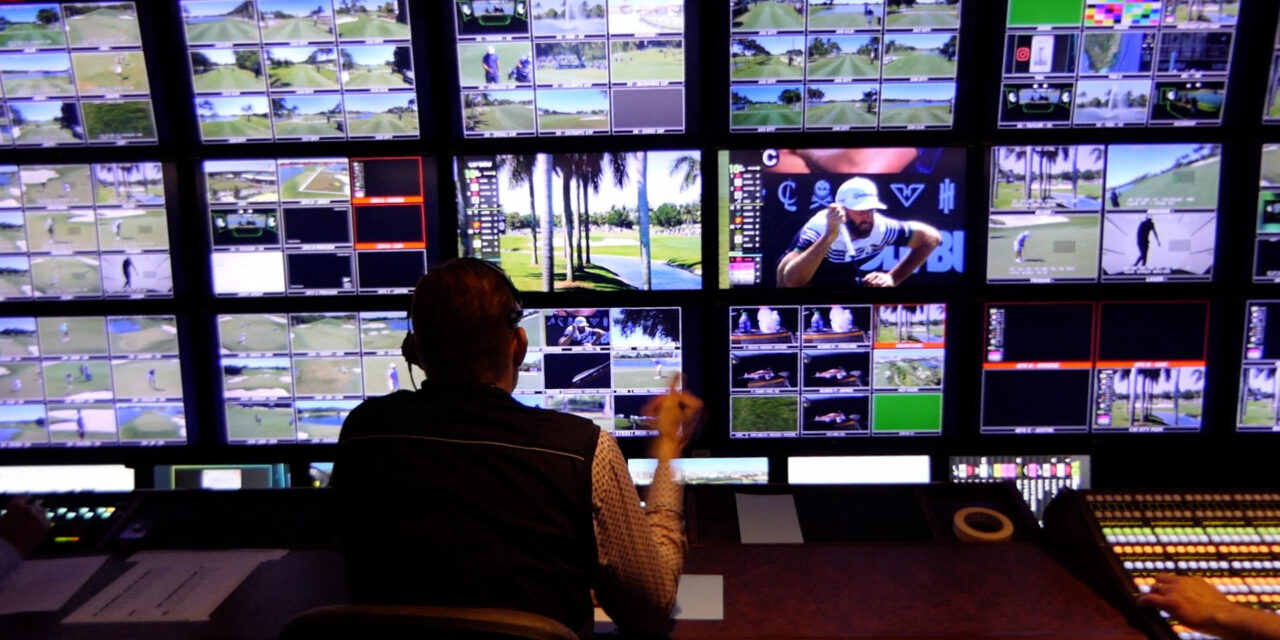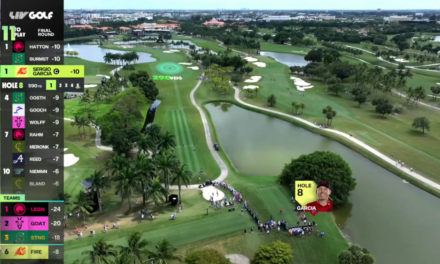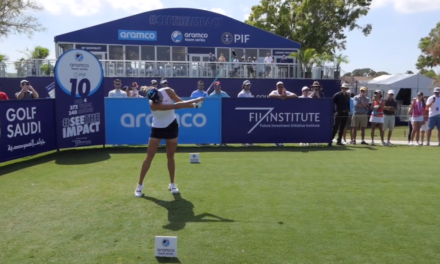A “Drone on the Golf Course” gives a total different view to the Television Audience Watching – Part II
A Deeper Dive into to the LIV Golf Production Studio
By Jamie McWilliams
Not so long ago, watching a tour event on TV, an aerial shot was either pre-recorded from a copter, or live from a blimp. Well, the airwaves have changed, and drones are leading the charge. Embracing this and other emerging technologies is LIV Golf.
Ross Smith is LIV’s vice president of Broadcast Innovation. His job is taking an idea and finding a way to make it reality on a golf telecast so the home viewer can see more of it. “I’ll very proudly say we’re on the forefront of utilizing drones. ”We were the first to have a live drone trace. From the tee once a player hits, we see exactly where it’s going. It just opens up everything for the viewer.”


This technology, optical tracking, used by other sports such as F1 auto racing, is a perfect fit for golf. “The big one for us,” according to James Watson, senior vice president of Worldwide Production, “was the Live Putt Break Predictor which took us a year to develop, and then after two years of development, the Drone Tracer that we could show in real time.”
Ross Smith further has pushed the tech envelope, with crossed fingers and the savvy of the skilled drone crews: “We actually did the Putt Predictor from a drone shot hovering above the green, then cut back to the camera on the ground just before the golfer hit his putt. It was seamless.” With a sigh of relief, he related that skeptics admitted to him “that was pretty cool.”
LIV utilizes two crews, moving to different optimal positions to fly the drones. In Miami, the crew I observed had four people coordinating communications and seamless execution of their drone flights.


Pre-planning indicates the best positions to capture what’s happening, but live event coverage dictates adapting to the fluidity of the competition. “The director will ask them to be on a certain hole to get a certain shot,” says Ross. “From that point it’s up to the drone operator to decide the best way to get the shot. But the shot that seemed perfect in the morning might not be available later depending on what’s happening on the course.”
Drones don’t have free rein at an event. Obstacles include radio interference and airports. In Miami, proximity to the airport kept drones under a 200-foot ceiling. And player complaints? “They sat they get it, and appreciate it,“ says Smith, “but the thing we can’t handle is the change in noise.” On windy days, holding a steady position means the motors are constantly revving up to fight the wind.

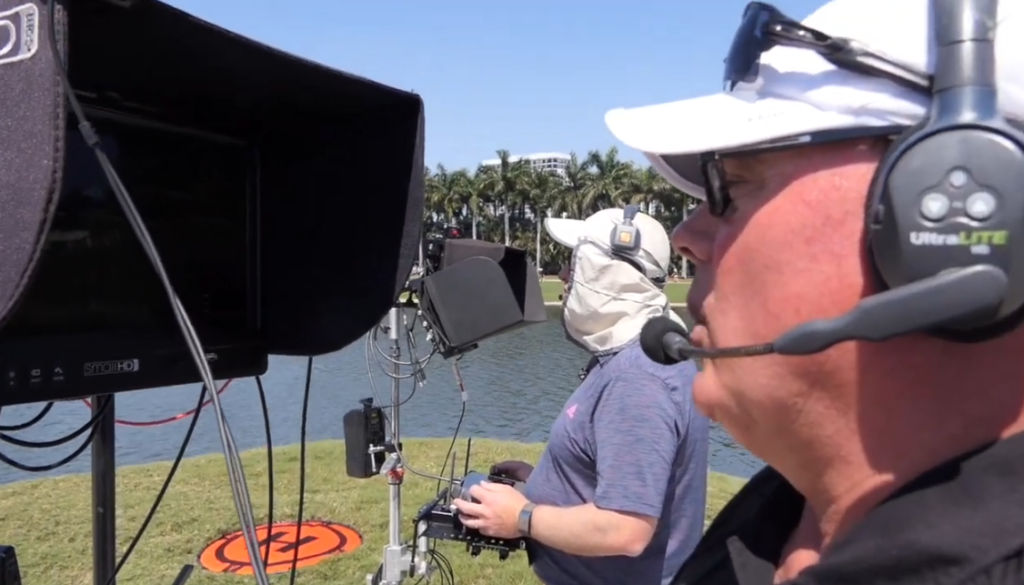
Watson believes harnessing all this technology is a necessity for LIV to cover the multiple starting points and added challenge of team competition. Keeping up means a huge amount of information marches across the screen, but since LIV is targeting a younger audience, they believe the use of AI to bring up more graphic displays and information in real time is welcomed by this generation of viewers.
He put the evolution of drone technology in perspective: “The blimp was a revolutionary device when it came along in the 80s, because you could get the bigger picture of the course at one time. But showing a swing on the ground and following where it landed, that’s not enough. With the drone and tracings you can show the line of the shot, crossing over trees, in real time, and that’s an incredible thing. Any broadcast that is paying for a blimp and not using one or two drones is five or ten years behind the times.”
LIV’s goal is to be most advanced telecast in golf. So, bye bye blimp, because the future is sky high.
Watch the 6 minute video…
Explaining the process of Delivering “Top Notch” views of LIV Golf
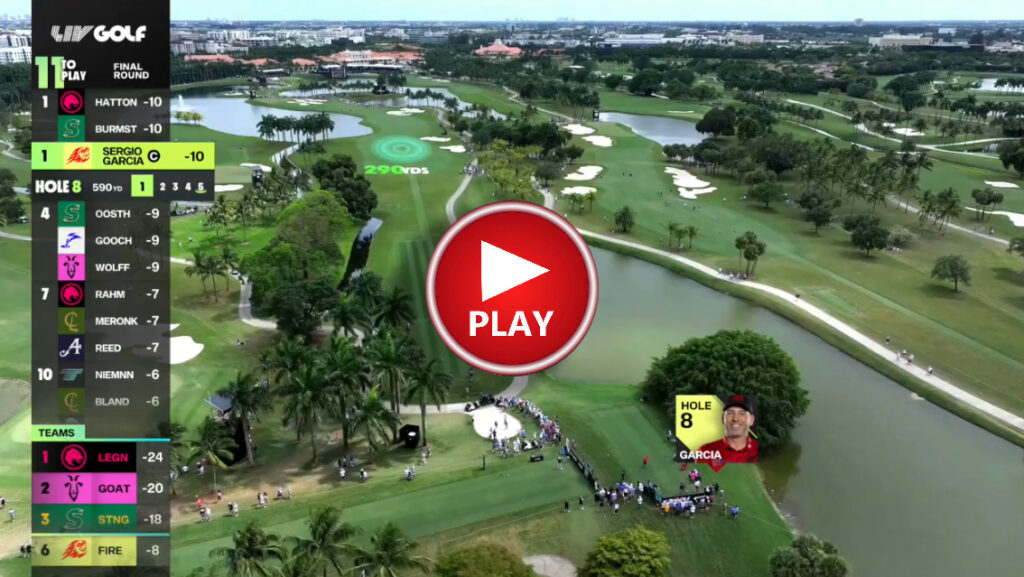
Make sure you subscribe to Jamie’s YouTube Channel


